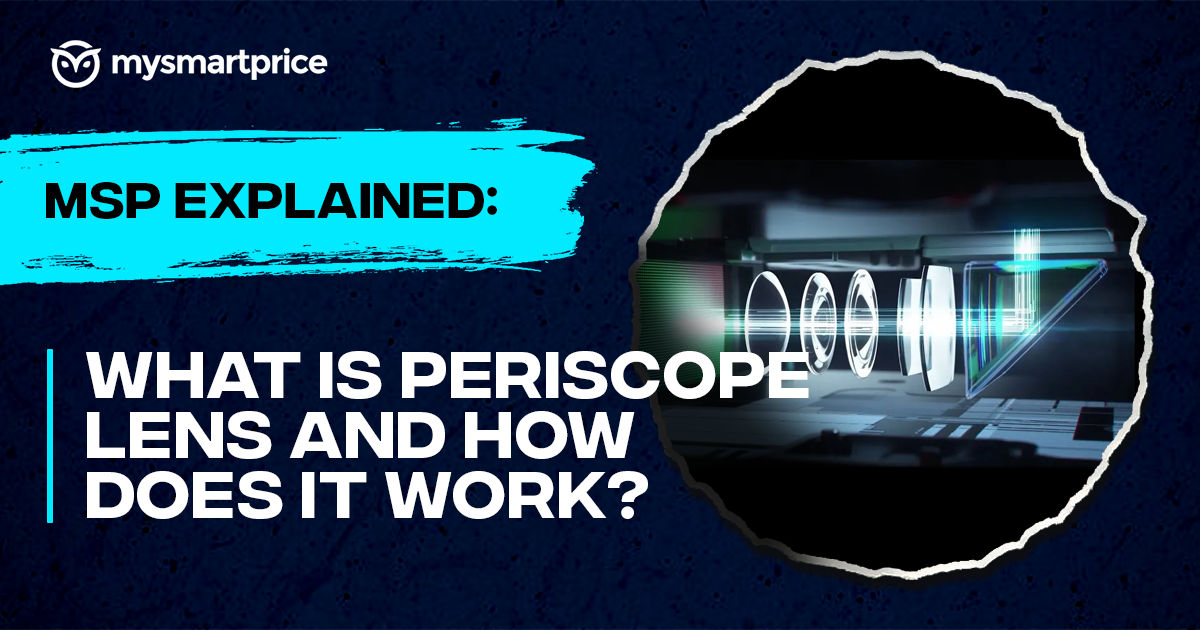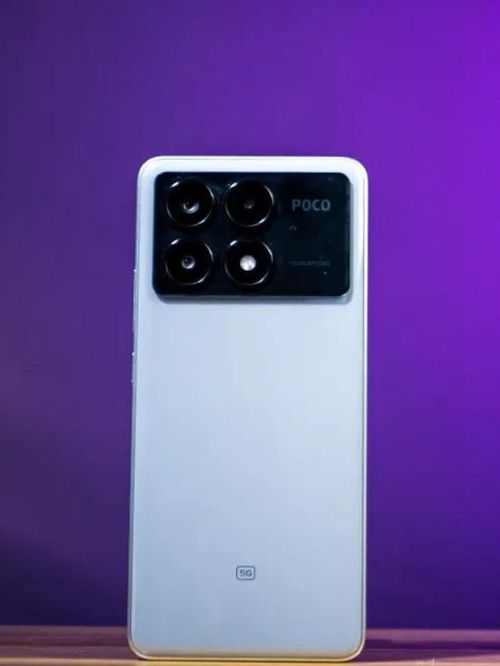
Smartphone cameras have evolved significantly over the last decade with generational upgrades in their zooming capabilities. Most flagship phones can now capture clear images. Modern smartphones have started including a periscope lens to enhance the zooming capabilities further. But how does this work, and what exactly is a periscope lens? This MSP Explained will help you understand the workings of periscope lenses.
What Is a Periscope Lens?
A periscope lens, aka folded lens, has the same structure as a periscope found on submarines. These refract and reflect light onto the sensor, which magnifies the image more than any other lens.
To create a zoom effect, a longer lens is required. However, a longer lens can be difficult for smartphones to maintain their compact size. Hence, phone makers have taken inspiration from submarine periscopes, where the light is bent perpendicularly inside the phone, allowing a longer lens to fit inside. This helps achieve a higher level of zoom without compromising image quality.
How Does It Work?
The periscope lens structure (which tends to have a square opening) on a smartphone consists of three main parts,
- The lens tube
- The zoom lens (concave and convex lenses)
- The prism or a mirror

Note: The iPhone 15 Pro Max uses a tetraprism periscope lens, which doesn’t include a combination of concave and convex lenses but just a prism. Hence, it has a smaller setup.
When light hits your smartphone, the prism lens bends it by 90°. Then, the light hits a series of zoom lenses, which create the true optical zoom effect. This zoomed ray of light finally enters the imaging sensor, which you can see on your smartphone. This entire setup is placed in a tube (placed separately from your phone’s primary camera).
OEMs use different types of periscope lenses for their phones. There’s practically no upper limit for optical zoom with a periscope lens, but typical smartphones range between 2.7x to 10x optical zoom. For example, the Samsung Galaxy S23 Ultra featured a 10MP periscope lens with 10x optical zoom. The latest iPhone 15 Pro Max also features a 12MP teraprism lens with 5x optical zoom.
Difference Between Periscope and Telephoto Lens
Both help achieve optical zoom using a physical camera setup to bring the subject closer to the camera. A telephoto lens can be directly attached to the camera sensor without additional accessories. However, periscope lenses require a separate setup with a prism and a combination of multiple lenses. While using a regular zoom lens instead of a periscope on smartphones is easier, there are some drawbacks.
A typical zoom lens can introduce distortion and a fish-eye effect beyond a certain limit. This phenomenon can also be easily noticed in high-power prescription spectacles. Using a thicker lens creates a bigger camera bump and may also affect the phone’s weight distribution. Periscope lenses eliminate these flaws to a huge extent.

In addition to optical zoom and periscope lenses, smartphones also have digital zoom. Instead of using additional physical hardware, the phone uses software algorithms for zooming. For instance, the Galaxy S24 Ultra’s 100x Space zoom is digitally achieved. Devices also use AI to sharpen the digitally zoomed image. However, optical and periscope lens zoom is always superior to digital zoom.
Limitations of Periscope Lenses on Smartphones
While a periscope lens on phones is a great hybrid solution to get the best possible optical zoom, they have their limitations,
- A periscope lens requires more internal space in a phone, often larger than a primary camera.
- This setup can increase production costs.
- A periscope setup uses a combination of multiple lenses that refract light through the prism and therefore, doesn’t give the best results in low-light conditions.
Phones With Periscope Lens Camera
The Sharp 904, launched in 2004, came with 2x zoom and is touted as the first phone with a periscope lens setup. The ASUS Zenfone Zoom took this further in 2014 and supported 3x optical zoom using a periscope lens.
Huawei took the concept mainstream in 2019 and introduced periscope lenses with 5x optical zoom on the Huawei P30 Pro. The phone gathered huge attention for its ability to capture clear images of the moon.
Samsung soon followed suit by using a 4x zoom periscope lens on the Galaxy S20 Ultra in 2020. Since then, the Ultra model of Samsung’s flagships has always featured a periscope lens.
In addition to flagships like the OnePlus 12, Pixel 8 Pro, Xiaomi 14 Ultra, and Vivo X100 Pro, periscope lenses are now arriving on midrange devices, as we saw on the Realme 12 Pro+. Here’s a list of phones available in India featuring a periscope zoom lens.
- Samsung Galaxy S24 Ultra
- Samsung Galaxy S23 Ultra
- OnePlus 12
- Xiaomi 14 Ultra
- Vivo X100 Pro/X100
- Google Pixel 8 Pro
- Google Pixel 7 Pro
- Realme 12 Pro+
As of now, periscope lenses are mainly found on high-end flagship phones. The feature is expected to be widely available on mid-range smartphones over the next few years.
Conclusion
A smartphone with a periscope lens will provide a better zoomed-in photo without physical limitations. But this isn’t a must-have feature you need on a smartphone. If you enjoy clicking zoomed-in shots, you can opt for a smartphone with a periscope lens. Otherwise, optical zoom or even digital zoom (in most cases) can suffice.
Plus, smartphones are among the most complicated engineered devices that we use. In an era where companies supposedly got rid of the innocent 3.5mm headphone jack as it took a lot of space, the periscope lens may get phased out in favour of larger primary camera sensors. That said, companies are more likely to retain it until they find a better solution for zooming.











